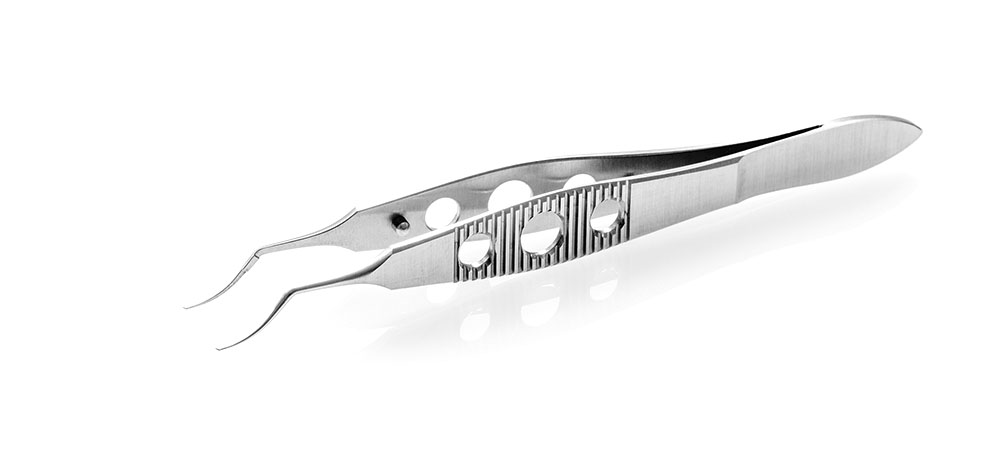Eye Surgery
Visual judgment

Small, fine, delicate and with minimum jaw width. The tip of an eye surgery instrument must be extremely fine to enable the surgeon to penetrate below the lens or into the cut during a surgical intervention without damaging the body of the eye. The dimensions of the teeth on our pincettes are usually less than the dimension of the cornea, i.e. less than 0.5 mm. There is no other aspect of surgical mechanics where such delicate and intricate manual dexterity is called for, nor where greater precision is required.
A good example of this perfect precision is the Colibri pincette. With this instrument, the eyeball is fixed in position during an OP to ensure that muscular contractions, which can also take place while anesthetized, are not able to impair the precision of the cut. With dimensions this fine, mechanical machining of these instruments is quite simply not feasible. The level of manual expertise required in the production of our eye surgery instruments is therefore correspondingly high.
Our product range:
- Lens holding forceps
- Lentil Grasping Forceps
- Chalazion Forcpes
Ophtalmology forceps:
- Arruga
- Bishop-Harmon
- Castroviejo
- Colibiri
- Dermot
- Draeger
- Faulkner
- Graefe
- Helveston
- Katzin
- Kapsularhexis
- Lester
- Meibom
- O’Gawa
- Paufique
- Utrata
Chalazion Forcpes:
- Berke
- Columella
- Cottle
- Desmarres
- Francis
- Heath
- Hunt
- Lambert
- Prince
- Sheehy
- Watzke
- Wies
